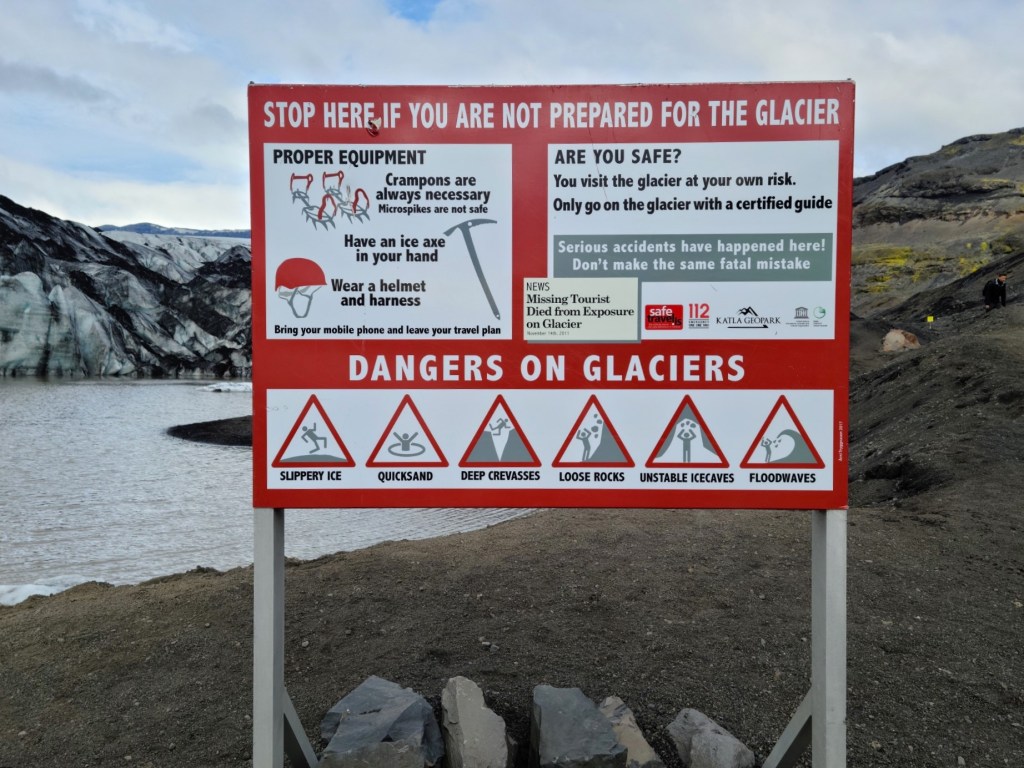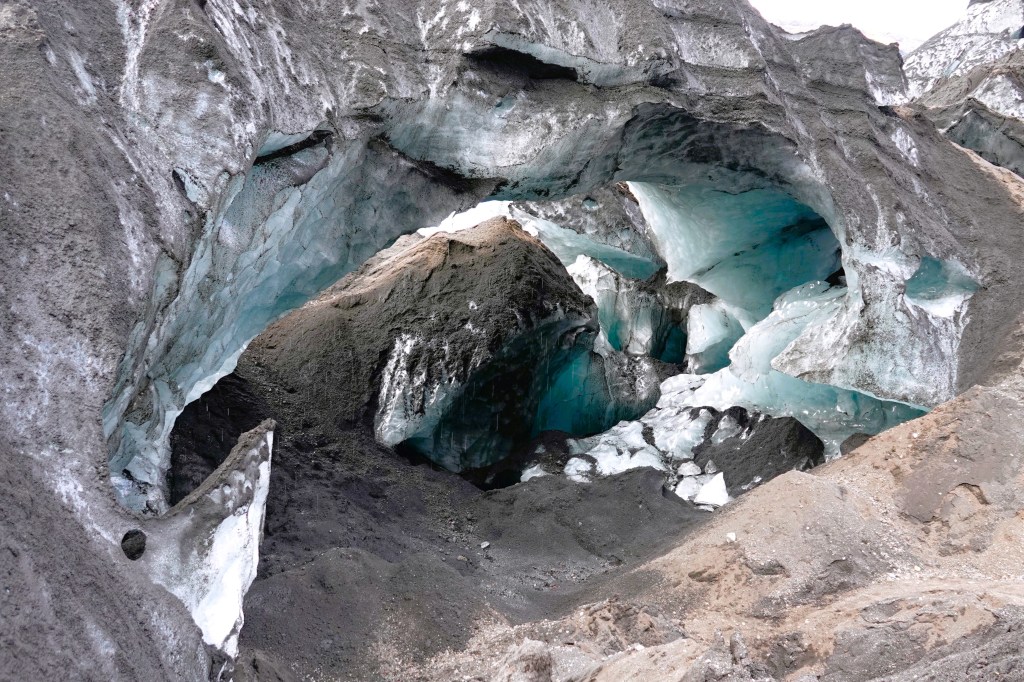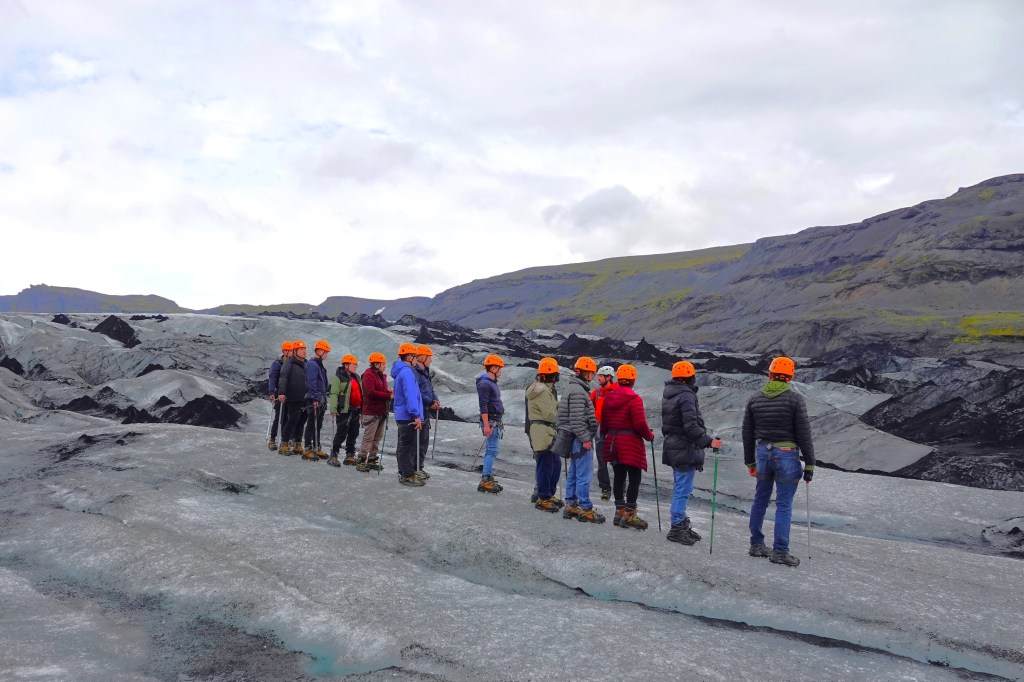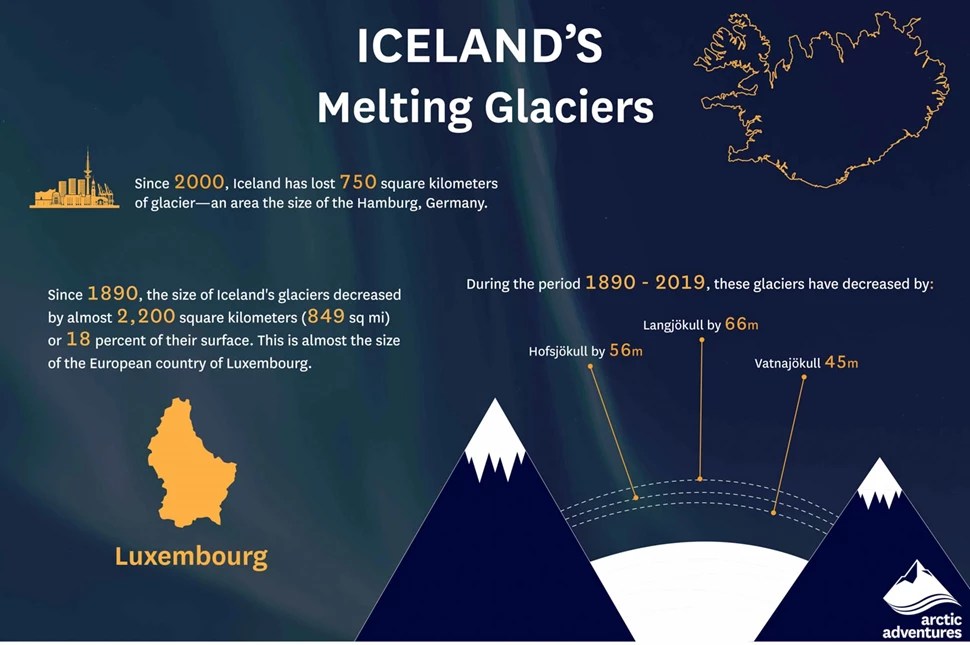There is a glacier lagoon at the tip of Sólheimajökull’s tongue that never existed a decade ago. Today, that lagoon is 80 meters deep, and its fed by glacial melt.

Sólheimajökull is an 11km outlet glacier of Mýrdalsjökull, Iceland’s 4th largest ice cap of 269 named glaciers, and easily accessible and suitable for ice adventuring.

Climatologists have been studying Sólheimajökull’s since 1930, documenting a loss of more than 2 sq.km. of its ablation area, and retreating a mile from its original marker.

During the summer Sólheimajökull loses 3 meters of ice every month with frequent ice calving.

With so much chatter about climate change and glacier volatility, I thought it best to have a look around the ice and judge for myself. So Leah and I drove to Sólheimajökull to join a guided glacier expedition,

where we were outfitted with a harness, helmet, crampons and ice pick. With some instruction, we learned how to dress ourselves and behave like mountaineers.

Then the conversation shifted to safety first, and how to avoid the treacherous crevasses on a melting ice mountain that’s constantly in motion.

After a brief hike, we arrived at the ice, but the approach to the top wasn’t a graduated trail; it was a wall.

Suddenly, I felt our training was insufficient, and I couldn’t imagine that all of us were prepared to dig in with our crampons and ice axes and climb over this wall, but that was unnecessary. We simply stepped around the mound on chiseled risers that were rapidly melting…

until we all reached flat ice.

I questioned why this ice had a different color and texture–more like ice coal–than blue crystal.

Valerio, our guide from northern Italy attributed it to the 1918 eruption of Katla, Iceland’s largest active volcano, and fragments of rock and debris–known as glacial till–that typically develop when a glacier passes over bedrock. We were walking on 100-year ice dated by the volcanic ash trapped inside the ice!

Except for occasional photo ops like a discovered ice cave,

we were always moving across the ice and up the throat, and discouraged from breaking the line or falling behind.

After 30 minutes on the ice, it was time to celebrate with a drink. Valerio grabbed his New Zealand ice ax to tap a vein under the ice, and the bar was open…

and it was cold and refreshing!

Since 1890, Iceland has lost approximately 18% of its ice mass to warming, and Sólheimajökull is melting faster than scientists originally speculated. They are sounding the alarm–telling us that Iceland’s glaciers are melting faster than they can recover.

And climate change, of course, plays a pivotal role in this process. Ironically, eco-tourists are rushing to Iceland to experience the glaciers before they disappear.
But Iceland is doing something to mitigate the damage by pledging carbon-neutrality before 2040. Already, the island’s geography and geology provide almost 100% renewable energy for generating heat and electricity.

But will it be enough for future generations?…



Super interesting, yet sad and alarming! Thanks for sharing all the information! We need to take climate change seriously!
Beautiful photos, too!
LikeLiked by 1 person
Thanks, Carol. Iceland plays a pivotal role in climate change. If they were to lose all their ice, the ocean would rise nearly 1/2 inch and the aquatic eco-system (fish and all) would not survive.
LikeLiked by 1 person